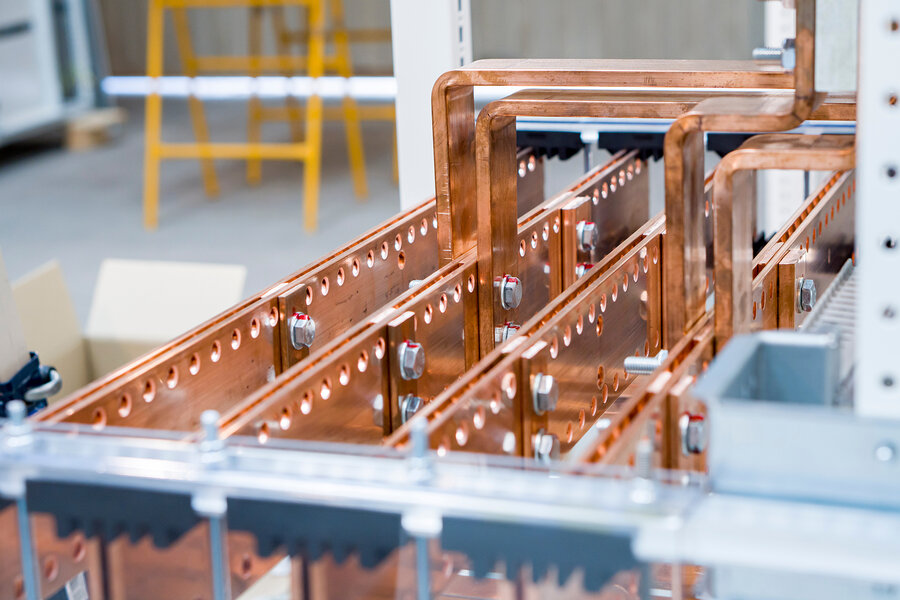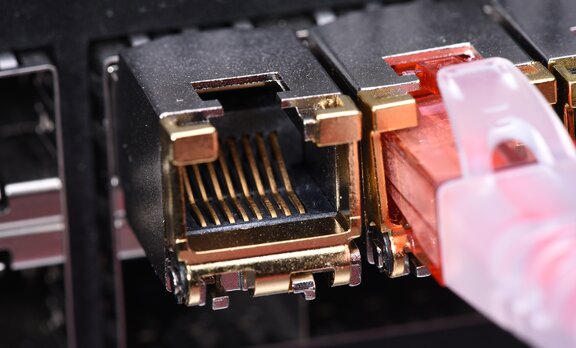In a world increasingly reliant on efficient energy solutions, copper busbars play a vital role in keeping the power flowing across industries. Whether it’s in large-scale renewable energy projects, automotive battery systems, or everyday electrical panels, copper busbars are the conduits that distribute the electricity powering our modern world.
As battery technology advances and industries demand more efficient power management, copper busbars are becoming more critical than ever. Their superior conductivity, durability, and customizability make them indispensable in the growing landscape of electrical infrastructure.
What is a Busbar?
A busbar is a solid metallic strip or bar that distributes electrical power in a variety of systems. Busbars are essential in managing high-current loads, providing a reliable and efficient way to transfer electricity between components like switchboards, generators, or batteries.

What are Copper Busbars?
Copper busbars, made from high-conductivity copper, are the backbone of modern electrical systems. They come in a wide range of sizes and configurations, tailored to meet the specific needs of different industries. From small electrical panels to large-scale renewable energy projects, copper busbars are prized for their superior conductivity and durability. MSS Products is a global leader in manufacturing these vital components, offering custom solutions designed to meet exacting specifications across various sectors.
Busbar Alternatives: Aluminium and Cable Power Distribution
Aluminium busbars offer a cost-effective alternative to copper. While less conductive, they are lighter and often used in applications where weight is a factor. Cables, on the other hand, are more flexible and commonly used for smaller or less demanding electrical systems. However, both alternatives lack the performance benefits of copper busbars in high-current applications.
Why Choose Copper Over Alternatives?
Copper busbars are often compared to aluminium busbars and traditional cable-based electrical systems. While aluminium and cables each have their place, copper stands out in terms of performance, especially in high-demand environments.
- Superior Conductivity: Copper boasts nearly twice the electrical conductivity of aluminium, making it the preferred choice for systems where minimising resistance and energy loss is crucial. This results in higher efficiency in power distribution and reduced energy waste over time.
- Durability and Longevity: Copper is more resistant to oxidation and corrosion compared to aluminium, ensuring a longer lifespan. This makes it ideal for applications exposed to varying environmental conditions, such as outdoor electrical systems or renewable energy installations.
- Compact Design: Busbars, in general, allow for a more compact installation compared to bulky cable systems. Copper's excellent conductivity enables thinner, lighter busbars that handle higher current loads while saving space, which is especially important in confined areas like control panels.
- Heat Management: Copper busbars have better thermal properties than aluminium. This means they can manage heat more effectively, reducing the risk of overheating and ensuring a stable system even under heavy loads.
Copper Busbars vs Aluminium Busbars vs Cable Power Distribution Systems
| Copper Busbars | Aluminium Busbars | Cable Distribution Systems | |
| Conductivity and Ampacity | Highest conductivity; excellent ampacity | About 60% of copper's conductivity; larger sizes needed for equivalent ampacity | Generally lower ampacity than busbars of equivalent cross-sectional area |
| Cost | Higher cost; price fluctuates with market | Less expensive than copper; price more stable | Often most cost-effective for smaller power distribution needs |
| Weight | Heavier | Significantly lighter than copper | Usually lighter than rigid busbars, especially for smaller systems |
| Corrosion Resistance | Excellent corrosion resistance in most environments | Forms protective oxide layer; may need additional treatment in corrosive environments | Can be well-protected with insulation |
| Thermal Properties | Excellent thermal conductivity; efficient heat dissipation | Lower thermal conductivity than copper; higher coefficient of thermal expansion | Varies depending on cable type and insulation; generally less efficient heat dissipation than busbars |
Customisation Options for Copper Busbars
One of the key advantages of working with MSS Products is the wide range of customisation options for copper busbars. Each project has unique requirements, and MSS understands that one size does not fit all.

Material Customisation
MSS works with top-grade Copper ETP and offers specific OF-grade copper options based on customer needs. This flexibility allows MSS to cater to industries with specific electrical conductivity or material purity requirements.
Common Copper Variants for Busbars
- Copper ETP (Electrolytic Tough Pitch)
- Also known as C11000
- Most widely used copper for busbars
- Excellent electrical conductivity
- Good formability and machinability
- Oxygen-Free Copper (OF)
- C10200 grade
- Higher purity than ETP copper
- Improved conductivity and ductility
- Better resistance to hydrogen embrittlement
- Copper Alloy C101
- High conductivity copper
- Minimum 99.99% copper content
- Excellent for high-current applications
- Copper Alloy C103
- Oxygen-free, silver-bearing copper
- Improved strength and softening resistance
- Used in applications requiring high conductivity and strength
- Copper Alloy C106
- Deoxidized copper with phosphorus
- Good weldability and formability
- Suitable for applications requiring brazing or welding
- Copper Alloy C110
- Electrolytic tough pitch copper with silver
- Improved annealing characteristics
- Used in high-temperature applications
- Beryllium Copper
- Copper alloyed with beryllium
- High strength and hardness
- Used in specialised applications requiring both strength and conductivity
- Chromium Copper
- Copper alloyed with chromium
- Combines high conductivity with improved strength
- Used in applications requiring wear resistance
The choice of copper variant depends on the specific requirements of the busbar application, including electrical conductivity, mechanical strength, temperature resistance, and manufacturing processes involved.
Finishes
Copper busbars can be finished with a variety of plating options, including tin plating, silver plating, and heat shrink sleeving. These finishes add layers of protection against corrosion and wear, further enhancing the lifespan of the busbars in harsh conditions.
Common Finishes for Copper Busbars
- Natural/Etched
- Raw copper surface, sometimes etched for improved adhesion
- Tin Plating
- Bright tin: Shiny appearance
- Matte tin: Dull finish
- Improves corrosion resistance and solderability
- Silver Plating
- Enhances conductivity and corrosion resistance
- Often used in high-frequency applications
- Nickel Plating
- Provides excellent corrosion resistance
- Improves wear resistance
- Gold Plating
- Offers superior conductivity and corrosion resistance
- Used in high-end or specialised applications
- Copper Plating
- Applied over base copper for a uniform appearance
- Can improve surface quality
- Zinc Plating
- Provides good corrosion resistance at a lower cost
- Epoxy Coating
- Insulates the busbar
- Provides excellent chemical and corrosion resistance
- Heat Shrink Sleeving
- Insulates the busbar
- Available in various colours for identification
- Annealing
- Heat treatment process to soften the copper
- Improves ductility and formability
These finishes are selected based on the specific requirements of the application, such as corrosion resistance, conductivity, solderability, or insulation needs. The choice of finish can significantly impact the performance and longevity of the copper busbar in its intended environment.
Insulation and Coating
MSS provides in-house sleeving insulation, as well as spray or dip coating using non-PVC materials. This ensures high-quality insulation that meets the safety and durability standards required in modern electrical installations.
Fastener Fitting and Laser Marking
For easy installation and traceability, MSS can fit busbars with fasteners and apply laser marking or labelling. This helps in organising and identifying components, making maintenance and system updates more efficient.
Efficient Manufacturing Processes for Copper Busbars
MSS Products prides itself on its advanced and efficient manufacturing processes. Leveraging decades of expertise and the latest technology, MSS ensures quick turnaround times without compromising on quality.
Stamping and Punching
The stamping and punching of copper busbars are done using highly precise tools, which are developed internally. MSS’s process is designed for efficiency, delivering up to 1.5 million strokes before requiring maintenance, which minimises downtime and keeps projects on schedule.
CNC Bending
Using advanced CNC bending machines, MSS offers exacting precision in the shaping of busbars, whether for small prototypes or large production volumes. The flexibility of this process allows for rapid adjustments, accommodating design changes swiftly.

Soft Tooling for Prototyping
MSS understands that prototyping is a critical stage in product development. To reduce costs and lead times, MSS employs soft tooling solutions and laser cutting equipment, enabling rapid prototyping without the need for expensive hard tooling.
This streamlined manufacturing approach ensures that MSS customers benefit from fast, cost-effective solutions tailored to their specific project needs.
Quality Control: Ensuring Top Performance
Quality control is at the heart of MSS Products' operations. Every copper busbar produced is subjected to rigorous testing to ensure it meets industry standards and customer specifications.
In-House Testing
MSS has a state-of-the-art testing facility where products undergo dielectric tests, torque tests, and plating thickness inspections. Each busbar is measured for conformity, ensuring that it performs optimally in real-world applications.
Automated Inspection
To maintain precision and reduce the risk of human error, MSS uses automated CMM (Coordinate Measuring Machines) to inspect busbars. This ensures exact dimensions and tolerances are met, critical for high-performance systems.
Tracking and Traceability
MSS ensures all parts are fully traceable, with QR codes and tracking systems implemented for each batch. This guarantees accountability and makes it easy to trace back any potential quality concerns, giving customers peace of mind.
Common Use Cases for Copper Busbars
Copper busbars are essential in a variety of high-current applications. Here are some of the most common uses for these components:
- Switchboards: Copper busbars are used to distribute electrical power in switchboards, providing reliable and efficient connections between circuits.
- Wind Turbines: In renewable energy, copper busbars are critical in managing the power generated by wind turbines. They ensure efficient transfer of electricity, improving overall system performance.
- Battery Storage Systems: In energy storage solutions, copper busbars provide the necessary conductivity for high-efficiency power distribution between batteries and electrical loads.
- Electrical Panels: Copper busbars are widely used in electrical panels, where they offer a neat, organised solution for managing multiple electrical connections.
- Automotive Industry (E-Motors and Batteries): With the rise of electric vehicles, copper busbars play a significant role in connecting battery systems to e-motors, offering efficient power transfer and reducing energy loss.
What Sets MSS Products Apart?
MSS Products is not just another copper busbar manufacturer. With over 40 years of experience, the company has built a reputation for delivering high-quality, customisable solutions that cater to a wide range of industries.
Here’s what makes MSS stand out:
- Custom Engineering Solutions: MSS doesn’t offer off-the-shelf solutions. Every copper busbar is tailored to meet the specific needs of the client, ensuring optimal performance.
- Cutting-Edge Technology: By using advanced CNC machinery and soft tooling techniques, MSS can quickly turn around prototypes and full-scale production runs, meeting tight deadlines without compromising quality.
- Global Reach: MSS Products serves clients worldwide, with facilities in the UK, India, and Poland. This global footprint allows MSS to meet customer demands efficiently, no matter where they are based.
FAQ's
What is a busbar?
A busbar is a conductive strip or bar that is used in electrical power distribution to efficiently transmit electricity between various circuits or systems.
Why choose copper over aluminium for busbars?
Copper offers superior conductivity and durability, making it ideal for high-performance and high-current applications where efficiency and longevity are critical.
How can copper busbars be customised?
MSS offers customization in terms of size, plating, insulation, and fastener fittings, ensuring the busbars fit your exact project requirements.
What industries use copper busbars?
Copper busbars are used in industries ranging from renewable energy (wind turbines) to automotive (electric vehicles), power distribution, and battery storage systems.
How long does it take to produce custom copper busbars?
Thanks to MSS’s efficient manufacturing processes and large stock of materials, custom copper busbars can be produced on short lead times, depending on the complexity of the project.
Conclusion
When it comes to copper busbars, MSS Products delivers unmatched quality, customization, and efficiency. With advanced manufacturing techniques, stringent quality control, and a commitment to meeting client needs, MSS is the go-to partner for copper busbar solutions across industries. For more information or to discuss your project, contact MSS Products today.
Back to resources





